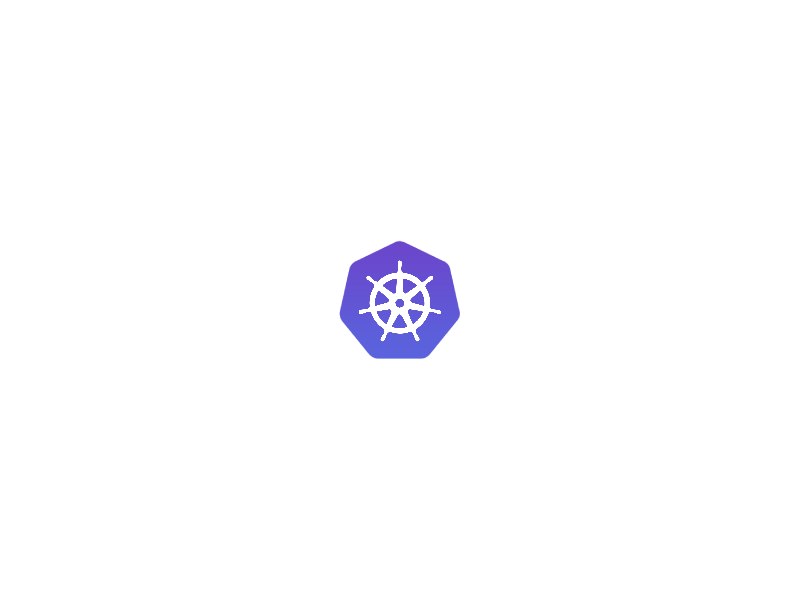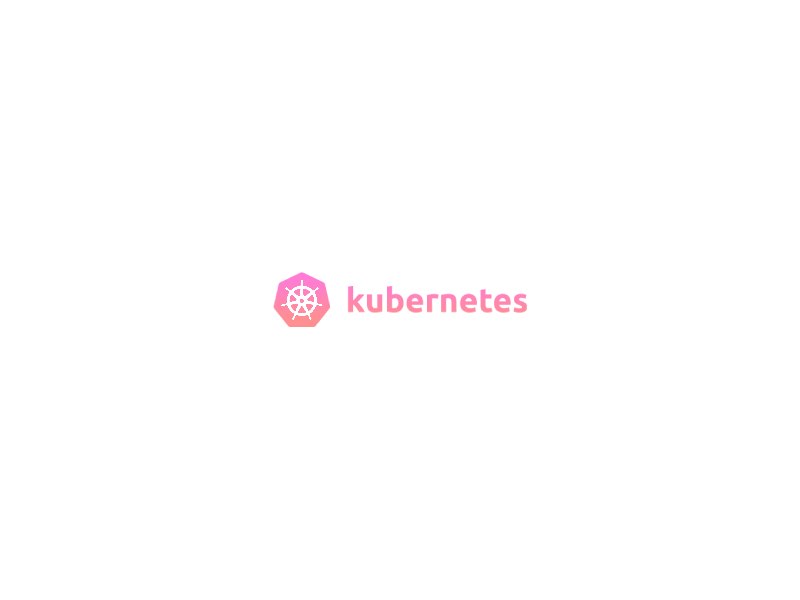Whether you’re a seasoned developer or just starting your journey, this complete guide will equip you with all the essential details you need to unlock the full potential of container orchestration. So, buckle up as we embark on an exciting adventure filled with surprises and explosions of knowledge!
Kubernetes, often abbreviated as K8s, is an open-source platform that automates the deployment, scaling, and management of containerized applications. It provides a robust infrastructure for running your software in a distributed environment, allowing you to focus on building great applications rather than worrying about the underlying infrastructure.
Imagine having the power to effortlessly deploy and manage your applications across multiple servers, ensuring scalability, resilience, and fault tolerance. Kubernetes allows you to achieve just that! With its intelligent scheduling and load balancing capabilities, you can ensure optimal resource utilization while maintaining high availability.
But how does Kubernetes work its magic? At its core, Kubernetes operates using a master-worker architecture. The master node oversees the cluster’s state and orchestrates the deployment and scaling of containers. Worker nodes, on the other hand, run the actual application instances within containers.
With Kubernetes, you have a rich set of features at your disposal. You can define your application’s desired state using declarative configurations, easily scale your deployments horizontally or vertically, perform rolling updates, and even roll back changes if something goes wrong. Plus, Kubernetes integrates seamlessly with popular container technologies such as Docker, making it an industry-standard for container orchestration.
To truly grasp the power of Kubernetes, it’s essential to understand its key components, including Pods, Services, Deployments, and ConfigMaps. These building blocks enable you to structure and manage your applications effectively, while also providing flexibility and modularity.
In conclusion, Kubernetes is a game-changer in the world of container orchestration. By leveraging its capabilities, you can streamline your development processes, improve scalability, and enhance the reliability of your applications. So, why wait? Dive into this complete Kubernetes guide and unlock the full potential of container orchestration today. Get ready to be amazed as you witness the explosion of possibilities with Kubernetes at your fingertips!
Remember, Kubernetes is not just a tool; it’s a journey filled with endless surprises and exhilarating discoveries. Embrace it, experiment with it, and let Kubernetes revolutionize the way you develop and deploy your applications in this ever-evolving digital landscape.
Setting Up a Kubernetes Cluster
Look no further than Kubernetes, an open-source platform designed to automate the deployment, scaling, and management of containerized applications. Setting up a Kubernetes cluster might sound intimidating at first, but fear not! In this article, we’ll guide you through the process step by step, demystifying the world of Kubernetes along the way.
So, what exactly is a Kubernetes cluster? Think of it as a group of machines, or nodes, working together to create a powerful container orchestration system. Each node runs the Kubernetes software, allowing them to communicate, distribute workloads, and maintain high availability. Whether you’re running a small personal project or managing a large-scale enterprise application, a Kubernetes cluster provides the foundation for scalability, reliability, and flexibility.
Now, let’s dive into the nitty-gritty of setting up your own Kubernetes cluster. The first step is to choose a suitable infrastructure provider. Options like Amazon Web Services (AWS), Google Cloud Platform (GCP), or Microsoft Azure offer managed Kubernetes services that simplify the setup process. Alternatively, you can configure your own infrastructure using bare metal servers or virtual machines. The choice depends on your needs, budget, and level of control desired.
Once you have your infrastructure in place, it’s time to install and configure Kubernetes. Various tools, such as kubeadm, kops, or Rancher, assist with cluster creation and management. These tools streamline the process by handling essential tasks like provisioning nodes, establishing communication channels, and configuring networking.
Next, you’ll need to define the desired state of your applications using Kubernetes manifests. These manifest files, written in YAML or JSON, describe the containers, pods, services, and other resources required for your applications to run successfully. By specifying the desired state, Kubernetes takes care of the rest, ensuring that your applications are always up and running as intended.
One of the most exciting aspects of Kubernetes is its ability to scale applications effortlessly. With horizontal pod autoscaling, you can dynamically adjust the number of replicas based on resource usage. This means that during peak traffic periods, your application will automatically scale up to handle the increased load, and scale down during quieter times, optimizing resource utilization and cost efficiency.
In conclusion, setting up a Kubernetes cluster opens doors to a world of possibilities for managing containerized applications. By leveraging the power of automation, scalability, and fault tolerance, Kubernetes empowers developers and system administrators to focus on what matters most: delivering reliable and efficient software solutions. So, take the plunge, follow our guide, and unleash the explosive potential of Kubernetes in your application deployment journey!
Deploying Applications on Kubernetes
In this article, we will delve into the world of deploying applications on Kubernetes and explore how it can streamline your development process while ensuring optimal performance.
Imagine a scenario where deploying applications becomes as effortless as pressing a button, allowing your code to seamlessly run across multiple environments and scale effortlessly. Kubernetes makes this dream a reality, providing an efficient and automated solution for deploying, managing, and scaling containerized applications.
With Kubernetes, you can bid farewell to manual deployments and embrace a declarative approach. Rather than manually configuring individual servers or virtual machines, Kubernetes abstracts the underlying infrastructure, allowing you to define your desired state through simple YAML files. This declarative approach ensures consistency and reduces the risk of human error, enabling you to focus on what matters most: delivering high-quality software.
But what sets Kubernetes apart from other orchestration platforms? One word: scalability. Thanks to its robust architecture, Kubernetes empowers you to effortlessly scale your applications based on demand. Whether you’re experiencing a sudden surge in traffic or need to handle increased workloads, Kubernetes automatically manages the distribution and scheduling of containers, ensuring optimal resource utilization and preventing bottlenecks.
Furthermore, Kubernetes offers advanced features such as rolling updates and canary deployments, which enable you to seamlessly roll out new versions of your applications without affecting the end-users. This allows you to iterate quickly, experiment with new features, and deliver a flawless user experience.
In conclusion, deploying applications on Kubernetes is a game-changing strategy that simplifies the development process while enhancing scalability and performance. By embracing Kubernetes, you unlock the potential for seamless deployment, efficient management, and effortless scalability. So why wait? Dive into the Kubernetes ecosystem today and experience a new paradigm in application deployment. Your development team and end-users alike will thank you for it!
Managing Scaling and Load Balancing in Kubernetes
This powerful container orchestration platform has revolutionized the way we deploy and manage applications, offering a flexible and scalable solution for modern software architectures. In this article, we will delve into the world of managing scaling and load balancing in Kubernetes, exploring the strategies and best practices that will help you optimize your application’s performance.
Scaling is an essential aspect of any application that experiences fluctuating traffic or demand. With Kubernetes, scaling becomes a breeze. The platform allows you to scale your application horizontally by adding more instances of your containers to handle increased traffic. By leveraging Kubernetes’ auto-scaling capabilities, you can automatically adjust the number of replicas based on predefined metrics such as CPU utilization or request throughput. This ensures that your application can handle high loads without compromising performance.
Load balancing is another critical component of managing applications in Kubernetes. When you have multiple instances of your containers running, distributing incoming traffic evenly across these instances is crucial to avoid bottlenecks and maintain optimal performance. Kubernetes provides built-in load balancing mechanisms through its service abstraction. By defining a service, you create a stable endpoint that acts as a single entry point to access your application. Behind the scenes, Kubernetes intelligently distributes incoming requests to the appropriate instances, ensuring a smooth and efficient traffic flow.
To fine-tune your load balancing strategy, you can also leverage Kubernetes’ support for external load balancers. These load balancers can be integrated with Kubernetes to provide additional features such as SSL termination, advanced routing, and session persistence. By utilizing external load balancers, you can tailor your load balancing approach to match your specific application requirements and achieve even greater performance gains.
In conclusion, managing scaling and load balancing in Kubernetes is a vital aspect of optimizing your application’s performance and ensuring a seamless user experience. With Kubernetes, you have a powerful toolset at your disposal, enabling you to scale your application effortlessly and distribute traffic efficiently. By following best practices and leveraging Kubernetes’ features such as auto-scaling and load balancing mechanisms, you can unlock the full potential of your applications in today’s dynamic and demanding environments. So, why wait? Embrace Kubernetes and take your applications to new heights of scalability and performance!
Monitoring and Logging in Kubernetes
Well, buckle up and get ready for a thrilling ride as we explore the essential aspects of monitoring and logging in Kubernetes. In this article, we’ll uncover the secrets behind effectively monitoring your Kubernetes cluster and harnessing the power of logs to gain valuable insights.
Imagine a high-octane action movie where unexpected surprises and explosive moments keep you on the edge of your seat. Similarly, in the realm of Kubernetes, monitoring and logging play crucial roles, ensuring the smooth operation and robustness of your cluster.
Monitoring your Kubernetes environment is like having a surveillance system that gives you real-time updates on the health and performance of your cluster. With various monitoring tools and frameworks available, you can easily track critical metrics such as CPU utilization, memory usage, network traffic, and more. This invaluable visibility allows you to identify bottlenecks and proactively address issues before they escalate into full-blown disasters.
But what about logging? Think of it as the black box recorder on an aircraft, capturing every event, error, or transaction within your Kubernetes cluster. By intelligently collecting logs from all components, applications, and containers, you gain a comprehensive understanding of what’s happening under the hood. In the event of an incident or when troubleshooting, logs become your ultimate ally, revealing the chain of events leading up to the issue with precision.
To achieve effective monitoring and logging in Kubernetes, you can leverage popular open-source tools like Prometheus, Grafana, and Fluentd. These tools integrate seamlessly with Kubernetes and provide powerful features for collecting, storing, visualizing, and analyzing data.
By adopting a conversational style, Kubernetes becomes less daunting. Picture yourself orchestrating a symphony of containers, each playing a unique part in the grand production of your application. Monitoring and logging serve as your conductor’s baton, harmonizing the ensemble and ensuring a flawless performance.
So, whether you’re a Kubernetes newbie or an experienced operator, don’t overlook the importance of monitoring and logging in your cluster. They are the keys to unlocking a rich tapestry of insights and enabling you to react swiftly to unexpected events. Embrace the power of visibility and take control of your Kubernetes environment like a seasoned maestro directing a blockbuster movie. Get ready for surprises, explosions, and a level of specificity that will leave you captivated by the beauty of monitoring and logging in Kubernetes!
Kubernetes Networking and Service Discovery
Have you ever wondered how applications running on a Kubernetes cluster communicate with each other seamlessly? This is made possible by the robust networking and service discovery capabilities of Kubernetes. In this article, we will take a closer look at Kubernetes networking and service discovery, exploring the essential components and their functionalities. So, let’s dive in!
Understanding Kubernetes Networking:
Kubernetes employs a highly flexible and scalable networking model that allows containers within pods to communicate with one another as well as external resources. At the core of Kubernetes networking lies the Container Network Interface (CNI), which enables different network plugins to integrate with the Kubernetes cluster. These plugins provide network connectivity between pods across nodes.
Service Discovery in Kubernetes:
Service discovery plays a vital role in enabling communication between various services running within a Kubernetes cluster. When you deploy applications on Kubernetes, they are encapsulated within pods. Pods are ephemeral and can be created or terminated dynamically. To facilitate stable and reliable communication, Kubernetes introduces an abstraction called “services.”
Services act as a bridge between pods and allow them to be accessed by other pods or external clients. They provide a consistent endpoint for applications to communicate with, regardless of pod rescheduling or scaling events. Kubernetes services can be exposed internally within the cluster or externally to the outside world, depending on your requirements.
Key Components of Kubernetes Networking and Service Discovery:
1. Pod-to-Pod Communication:
Pods within a cluster can directly communicate with each other using their own IP addresses. This seamless communication is facilitated by the underlying CNI plugin responsible for network connectivity.
2. Ingress Controllers:
Ingress controllers act as an entry point to the cluster, enabling external access to services. They offer traffic routing, SSL termination, and load balancing capabilities, making it easier to expose services to the internet.
3. DNS-Based Service Discovery:
Kubernetes utilizes a built-in DNS service to enable service discovery within the cluster. Each service is assigned a DNS name, allowing other services or pods to reach it using its domain name.
4. Service Load Balancing:
Kubernetes provides load balancing functionality for services by distributing traffic evenly across multiple pods. This ensures high availability and efficient resource utilization.
Conclusion:
Kubernetes networking and service discovery are fundamental aspects of building scalable and resilient applications in a containerized environment. With its flexible networking model, powerful service abstractions, and robust components, Kubernetes empowers developers to create complex distributed architectures with ease. By understanding the key components and functionalities, you can harness the full potential of Kubernetes for your application deployment needs. So, embrace the power of Kubernetes and revolutionize your containerized infrastructure!
Kubernetes Security Best Practices
As this powerful container orchestration platform continues to revolutionize the world of cloud computing, ensuring the security of your Kubernetes infrastructure becomes paramount. In this article, we will delve into the realm of Kubernetes security best practices, equipping you with the knowledge to fortify your deployments and protect them from potential threats.
1. Master the Fundamentals:
To establish a secure foundation, start by hardening the cluster’s control plane. Utilize stronger authentication methods, such as two-factor authentication (2FA), and enforce role-based access control (RBAC) to limit privileges. Regularly update Kubernetes components to benefit from the latest security patches and bug fixes.
2. Secure Network Communication:
Shielding the communication channels within your Kubernetes cluster is vital. Leverage Transport Layer Security (TLS) certificates to encrypt traffic between nodes, API servers, and other components. Apply network policies to control ingress and egress traffic, creating segmented and isolated environments for enhanced security.
3. Implement Pod Security Policies:
Pods are the building blocks of Kubernetes deployments, and securing them is crucial. Utilize Pod Security Policies (PSPs) to define the minimum security requirements for pods running in your cluster. These policies restrict the usage of privileged containers, enforce read-only root file systems, and prevent privilege escalation attempts.
4. Container Image Security:
Thoroughly vetting container images is essential to avoid introducing vulnerabilities. Employ trusted registries, regularly scan images for known vulnerabilities, and consider implementing image signing and verification mechanisms. Utilize container runtime security tools that monitor and detect suspicious behavior within containers.
5. Ongoing Monitoring and Auditing:
Continuous monitoring plays a vital role in maintaining the security of your Kubernetes environment. Implement log aggregation and analysis solutions to detect anomalies and potential security breaches. Leverage Kubernetes auditing capabilities to track and review all relevant activities, ensuring accountability and enabling post-incident analysis.
Conclusion:
In a rapidly evolving threat landscape, safeguarding your Kubernetes infrastructure demands proactive measures. By following these best practices, you can fortify your deployments, mitigate risks, and maintain the integrity and confidentiality of your applications and data. Remember, Kubernetes security is a continuous process that requires ongoing vigilance and adaptation to emerging threats. Stay informed, update your security measures, and keep your clusters resilient against surprises and explosions in the digital realm.




